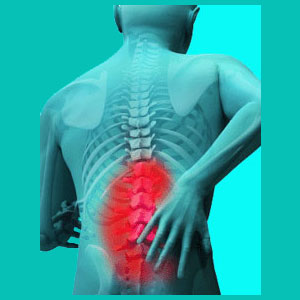
What is the best sleep position for a herniated disc? Will the position in which you sleep have positive or negative effects on your back or neck pain? How can you control the position in your sleep, since you might turn once you lose consciousness? These are all questions that we receive regularly on the sites of The Cure Back Pain Network and we want to take the opportunity today to answer them here and now.
Sleep is one of the most important of all commodities in life. Without good sleep, there can not be good health. Without sleep, cognitive abilities, physical abilities and psychoemotional state all suffer greatly. Without sleep, chronic pain becomes an increasing more horrific burden to bear each day. Therefore it is crucial that all patients do whatever they can towards optimizing their sleep and finding the ideal sleep position is just one step in this process.
This dialog provides our research regarding the best sleep position for herniated discs in order to minimize pain and maximize rest and relaxation at night.
Herniated Disc Sleep Position
Sleep should always be attempted in bed; never sitting upright or in any hybrid improvised posture. Try not to fall asleep on the couch, in a chair or on the floor. All of these factors will degrade the quality and quantity of sleep compared to sleeping in a proper bed.
So now that you are in bed, what position will serve you best? Let’s look at the options:
Stomach sleeping involves lying prone and turning the head to one side or the other in order to breathe comfortably.
Back sleeping involves lying supine and can have many variations with leg position and neck position.
Side sleeping can be performed on the right or left and can also involve many variations in leg and arm position.
Best Sleeping Position for Herniated Discs
We evaluate the optimal sleep positions for herniated disc pain sufferers on a continual basis, based on our research, clinical experience and patient provided first-hand citations. We also use our own experience as patients when we have suffered from back pain ourselves to make our determinations.
Side sleeping is universally recommended for health and is considered the least stressful position for the body. Side sleeping is our recommendation based on years of study and certainly wins as the best all around option for people with or without back pain.
Back sleeping comes in second place in terms of optimal sleep position for pain relief and good health. Back sleeping is less ideal for breathing and for spinal alignment. Back sleeping also puts more stress on the anatomy, including many of the major joints of the body. Back sleeping is not suggested if a person can sleep on their side instead.
Stomach sleeping is the absolute worst position to sleep in and carries a host of cautions with it. Stomach sleeping puts the most stress on key areas of the body, including the neck, throat, pelvis and chest and also terribly misaligns the spine. Stomach sleeping also increases the risk of having a significant health crisis during the night, such as heart attack, stroke or aneurysm.
Sleep Position for Herniated Disc Guidance
So, side sleeping is the top position for providing herniated disc relief. However, the position might still present some challenges for patients, so we provide the following tips to help you to acclimate to this posture as easily as humanly possible:
If you are used to sleeping on your back or stomach, it will take time to acclimate to side sleeping. This is ok. Try it and attempt to sleep in this position for as long as possible each night until it becomes normal and habitual for you.
Sleeping in a fetal position is the very best option. Tuck both knees up and in so that your upper legs are at approximately a 90 degree angle to your body, then allow your lower legs to assume another 90 degree angle to your upper legs so that they are approximately parallel to your body. Do not trap your lower arm beneath you, but instead allow it to rest to the side of your head, taking pressure off the lower shoulder.
Place a pillow in between your knees to relieve stress on the legs, pelvis and spine. Place another pillow under your top arm and make sure it is tall enough to support your shoulder to eliminate pressure on the shoulder, upper back and neck.
If you tend to turn in your sleep, you can use more pillows as wedges. Place one behind you and slightly under you and another one in front of you and slightly underneath you. This will prevent you from moving in your sleep.
Make sure that your mattress and pillow are supporting you correctly. If there is any doubt, consider replacing these items with ones which will serve you better!
Herniated Disc > Herniated Disc Advice > Sleep Position for Herniated Disc





